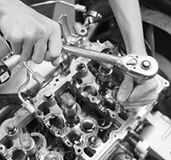Engineering and Technology Quarterly Reviews
ISSN 2622-9374




Published: 15 November
Design and Development of an Android-Based Flower Classification Application Using Artificial Neural Networks with Backpropagation Method
Kevin Kelvianto, Adhi Kusnadi
Universitas Multimedia Nusantara, Indonesia

Download Full-Text Pdf
10.5281/zenodo.10123964
Pages: 33-38
Keywords: ANN, Backpropagation, Flower Classification
Abstract
This study investigates the use of artificial neural networks (ANN) employing the backpropagation method to identify flower types based on petal shapes. Android devices were utilized to capture flower images and transmit them directly to a server. Once a sufficient number of images were gathered, the training of the artificial neural network commenced. The flower images were processed to extract shape features using Sobel edge detection followed by thresholding. Subsequently, the data were normalized and fed into the ANN for training. Once the training was complete, the Android devices were capable of capturing new flower images and using the ANN to identify them. The findings of this research indicate that by using a single hidden layer with 35 hidden nodes, the system achieved a flower detection accuracy of 80%.
References
Aznan, A. A., Ruslan, R., Rukunudin, I. H., Azizan, F. A., & Hashim, A. Y. (2017). Rice Seed Varieties Identification based on Extracted Colour Features Using Image Processing and Artificial Neural Network ( ANN ). IJASEIT, 7(6), 2220–2225.
Gupta, A., Sevak, H., Gupta, H., & Solanki, R. K. (2023). Swiggy Genie Clone Application. Int. J. of Aquatic Science, 14(1), 280–287.
Hiary, H., Saadeh, H., Saadeh, M., & Yaqub, M. (2018). Flower classification using deep convolutional neural networks. IET Computer Vision, 12(6), 855–862.
Jaiswal, M. (2018). Android the mobile operating system and architecture. Manishaben Jaiswal," ANDROID THE MOBILE OPERATING SYSTEM AND ARCHITECTURE", International Journal of Creative Research Thoughts (IJCRT), ISSN, 2320–2882.
Kusnadi, A., Pane, I. Z., Overbeek, M. V., & Prasetya, S. G. (2023). Face Recognition Accuracy Improving Using Gray Level Co-occurrence Matrix Selection Feature Algorithm. 2023 International Conference on Smart Computing and Application (ICSCA), 1–6.
Kusnadi, A., Wella, R. W., Pane, I. Z., & Fasa, M. I. (2022). Multi-Instance Face Recognition System Using Pca And Ann. Nveo-Natural Volatiles & Essential Oils Journal| NVEO, 710–718.
Kuznetsova, A., Rom, H., Alldrin, N., Uijlings, J., Krasin, I., Pont-Tuset, J., Kamali, S., Popov, S., Malloci, M., & Kolesnikov, A. (2020). The open images dataset v4: Unified image classification, object detection, and visual relationship detection at scale. International Journal of Computer Vision, 128(7), 1956–1981.
Marmanis, D., Schindler, K., Wegner, J. D., Galliani, S., Datcu, M., & Stilla, U. (2018). Classification with an edge: Improving semantic image segmentation with boundary detection. ISPRS Journal of Photogrammetry and Remote Sensing, 135, 158–172.
Meester, M. J., & Baslamisli, A. S. (2022). SAR image edge detection: review and benchmark experiments. International Journal of Remote Sensing, 43(14), 5372–5438.
Nwadiugwu, M. C. (2020). Neural networks, artificial intelligence and the computational brain. ArXiv Preprint ArXiv:2101.08635.
Rao, Y., Zhao, W., Zhu, Z., Lu, J., & Zhou, J. (2021). Global filter networks for image classification. Advances in Neural Information Processing Systems, 34, 980–993.
Shrestha, K. K., Bhattarai, S., & Bhandari, P. (2018). Handbook of Flowering Plants of Nepal (Vol. 1 Gymnosperms and Angiosperms: Cycadaceae-Betulaceae). Scientific publishers.
Waldner, F., & Diakogiannis, F. I. (2020). Deep learning on edge: Extracting field boundaries from satellite images with a convolutional neural network. Remote Sensing of Environment, 245, 111741.



